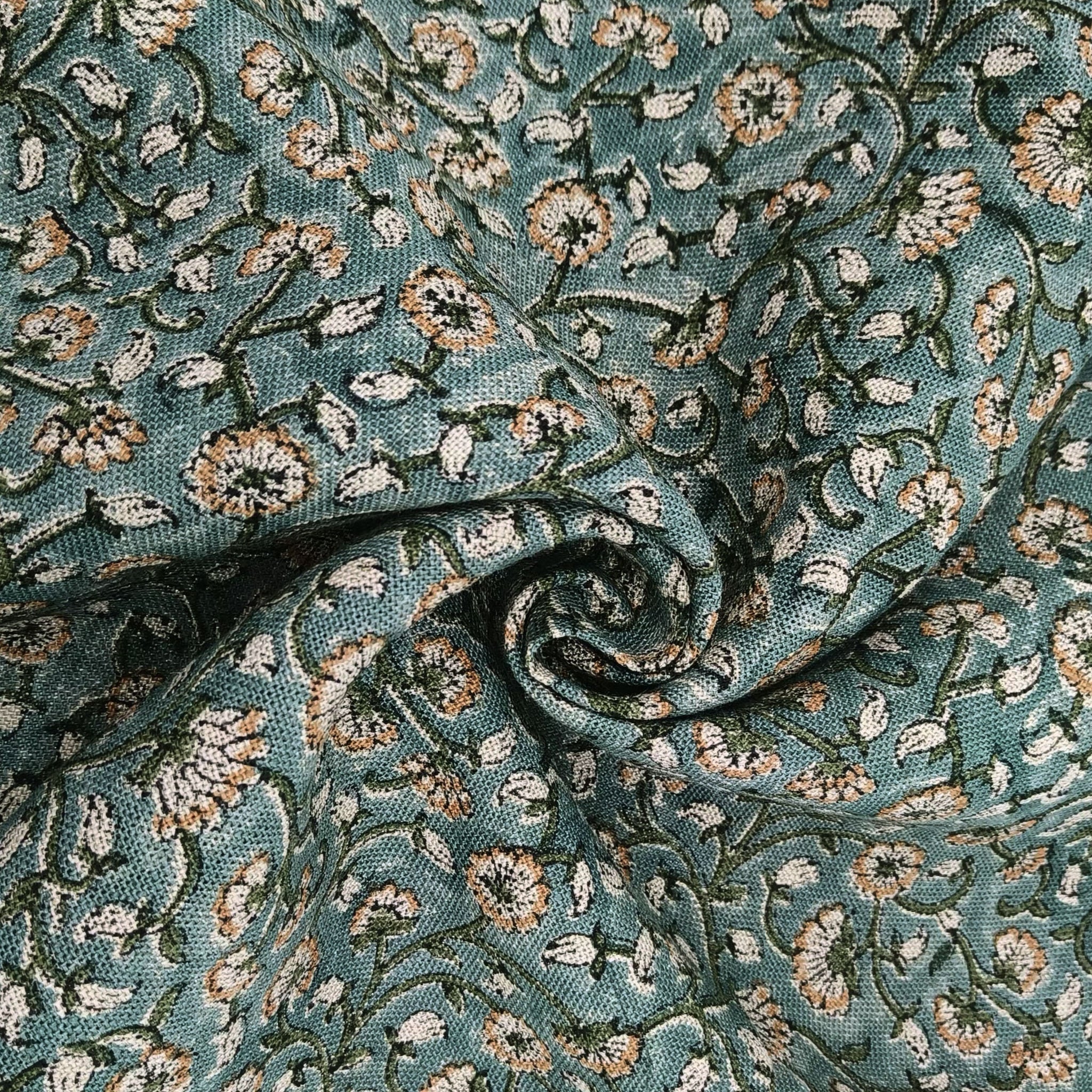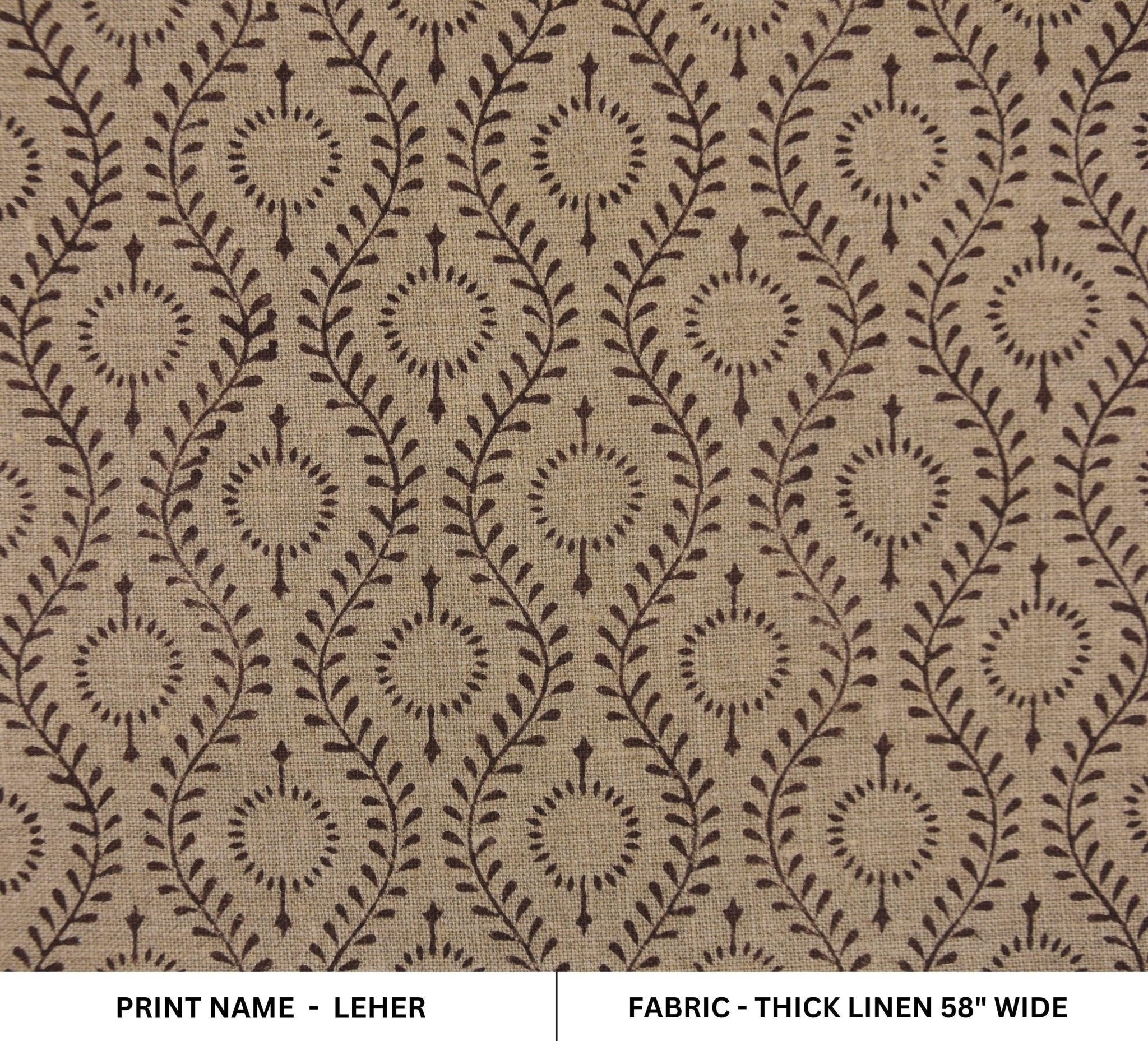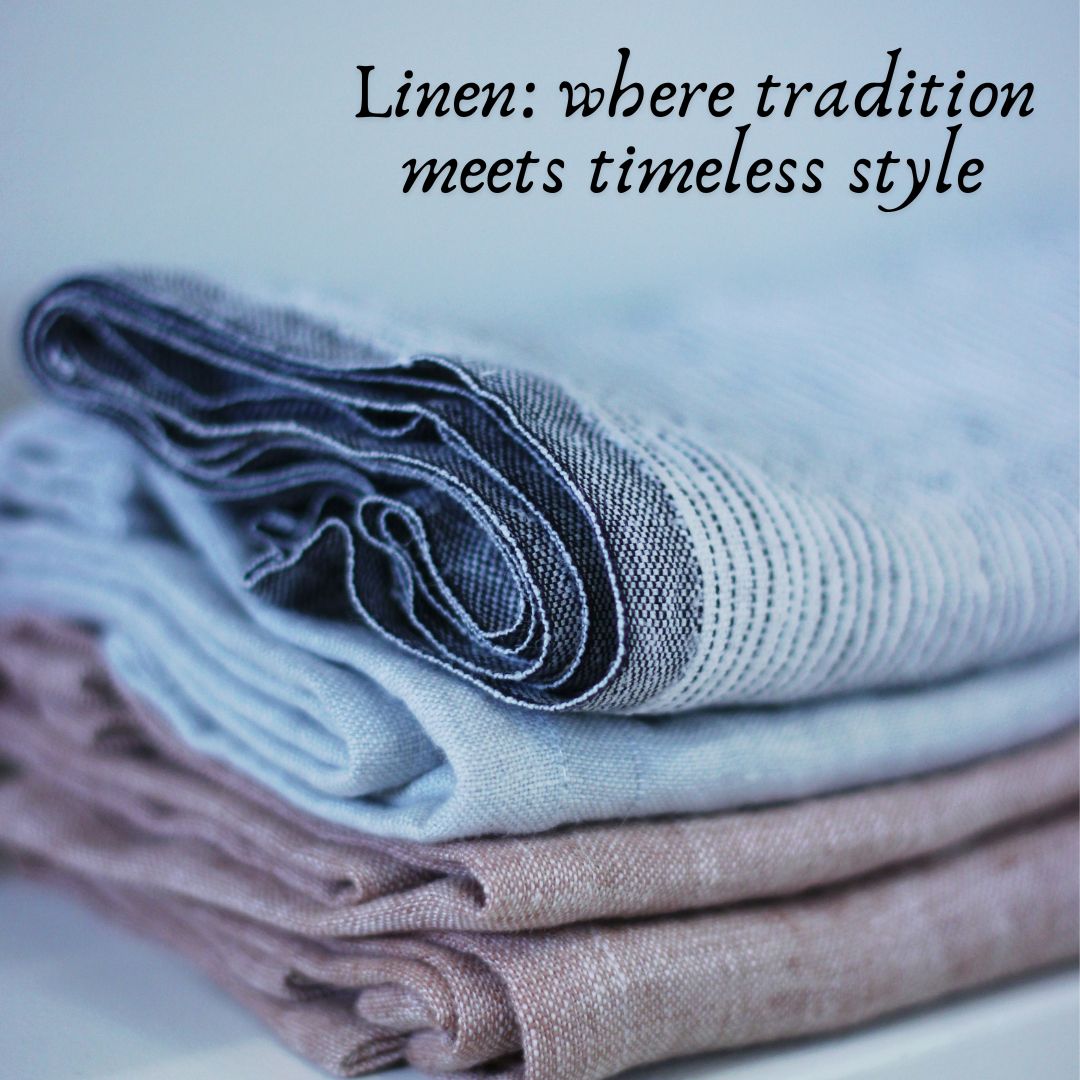Block-printed pure linen is one of the oldest textiles known to man, weaved within civilizations dating thousands of years ago. From ancient Egypt, wherein linen was used to symbolize purity and wealth, through today on fashion runways and in home interiors, pure linen has stood the test of time. What's the secret to the durability of this natural fiber? In this blog, we break down the very special properties that make pure linen so durable, its environmental benefits, and why it's a simply timeless choice for clothing, bedding, and beyond.
Pure Linen: Natural Elegance
The pure linen made from the fibers of the flax plant gives off a natural elegance that few other fabrics have been able to come close to. Its unique texture, combined with a slightly crisp hand feel and the way that it drapes, places linen as a favorite among those who appreciate understated luxury. Linen is very subtly shiny but develops a patina—a subtle sheen that becomes more pronounced as it's used. This genuinely adds to its appeal—where the linen fabric becomes softer and more lustrous, thus becoming a fabric that gets better with age.
Breathability and Comfort
One of the greatest strengths of pure linen is its breathability. As synthetic fabrics hold on to heat and moisture, which could be very uncomfortable, linen allows for airflow and chills the person wearing it in the hottest weather. This makes linen an ideal fabric, with breathing properties for summer clothing, to keep one comfortable no matter how high the temperature may be. Apart from this, linen is highly absorbent and subsequently dries out quickly, making it an excellent fabric to draw sweat from the body and hence maximize comfort. Be it a linen shirt, dress, or bedding, no other fabric can rival its ability for temperature regulation.
Durability and Longevity
Another reason for the timeless popularity of linen is its durability aspect. The flax plant produces very strong fibers, and the linen weave can give years and years of service without a problem. Unlike cotton, which can sometimes wear out quite easily, every time it is washed, linen becomes stronger, resisting wear and tear better than most materials. This makes linen outstanding as an investment, especially in applications such as bedding, where longevity is very important. Though a little pricier than other fabrics, the durability of linen makes up for it, thus being a worthy investment for anyone looking for quality.
Sustainability and Ecological Friendliness
At a time when sustainability is becoming ever more of a concern, the flax plant from which linen is derived stands out as one of the most ecologically friendly fabrics in the market. First of all, flax is a crop that requires little water and pesticides to grow, thus making it much more sustainable than cotton. Secondly, almost every part of the flax plant is used in the production process, generating very minimal waste. Thirdly, the manufacturing processes involved for linen are less harmful to the environment in comparison with such synthetic fibers as nylon; this is explained by the fact that fewer chemicals and less energy are needed in production. Moreover, it is biodegradable, and hence, when it does eventually reach the end of its life, it won't contribute to the growing problem of textile waste.
Linen in Fashion and Home Décor
Pure linen's versatility extends from mere clothing to being one of the popular choices in home decor. Linen has a natural texture and perfect drape that makes it very suitable for curtains, tablecloths, or even upholstery. Its timelessness and neutrality allow the fabric to fit into many styles, be it rustic, bohemian, minimalist, or modern. Linen in fashion has recently made a great comeback, with designers coming out in droves to back up the natural aesthetic and sustainable qualities associated with it. Tailored suits and casual summer dresses are just a few examples of how linen is being reimagined in contemporary silhouettes to prove that it's as relevant today as it was thousands of years ago.
Caring for Linen
Caring for pure linen is relatively easy, and with proper care, it will outlast most other fabrics. Linen should be washed in cool or lukewarm water using a mild detergent. Classically, harsh chemicals like bleach should be avoided because they do have the effect of weakening fibers. Although you can tumble dry on a low setting, air drying preserves the natural texture of linen. If you iron your linens while still slightly damp, you'll get a really crisp finish, but if you are going for relaxed, you might not need to iron them at all. The innate wrinkles of linen are part of its appeal, lending the fabric a relaxed, easygoing attitude.
Timelessness in Linen
Pure linen is timeless and good in a world of fast fashion and throwaway goods. Inbuilt natural beauty with comfort, durability, and sustainability, linen, at the end of the day, is a fabric beyond trends. Be it a linen shirt, a set of bed sheets, or even a piece of furniture, what you buy today is something that has been loved for thousands of years and will remain so for generations to come.

Conclusion
Pure linen is not just a fabric, it's an attitude perennially where quality, sustainability, and style just continue. Be it the naturally graceful feel of linen, its eco-friendly credentials, or just its unbeatable comfort level, it is an unbeatable blend of qualities that make it an ennobling addition to any wardrobe or home. As we move forward into a sustainable future, linen's timeless charm will not fail to make this material dear to all for generations to come.



